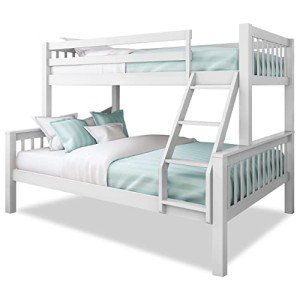10 Unquestionable Reasons People Hate Slide Bed
페이지 정보

본문

Understanding Slide Beds: A Comprehensive Overview
Introduction
Slide beds represent an innovative improvement in the field of transport and logistics, especially in the context of the trucking industry. These specialized beds use enhanced packing and dumping capabilities, increased performance, and much better security requirements. As the demand for logistics solutions ends up being more sophisticated, slide beds become a crucial tool for companies seeking to optimize their operations. This post explores the numerous aspects of slide beds, including their style, advantages, types, and maintenance factors to consider.
What is a Slide Bed?
A slide bed, typically referred to as a moving truck bed or slide-out bed, is a type of truck bed created to extend and pull back, permitting simpler access to cargo. These beds can slide out either by hand or through automated systems, facilitating loading and discharging while minimizing the strain on employees.
How Do Slide Beds Work?
The functionality of slide beds can differ based on their design:
Manual Slide Beds: These beds require several people to pull or press the bed out. While basic and cost-efficient, manual slide beds might not be appropriate for heavy-duty applications.
Automated Slide Beds: These beds run through hydraulic or electric systems that enable uncomplicated extension and retraction at the push of a button. Automated systems often feature security features to avoid accidents throughout operation.
The basic operation of these systems can be summarized in the following table:
| Type | System | Usage | Pros | Cons |
|---|---|---|---|---|
| Handbook Slide Beds | Pull/push operation | Light to medium loads | Lower cost | Requires physical labor |
| Automated Slide Beds | Hydraulic/Electric | Heavy loads and frequent usage | Convenience and performance | Greater initial investment |
Advantages of Using Slide Beds
Slide beds provide a number of advantages that make them an attractive alternative for organizations in different sectors. These advantages can be classified into functional performance, safety, and cost-effectiveness:
Operational Efficiency
- Easy Access: Slide beds allow workers to reach cargo without needing to climb up into the truck or maneuver around tight areas.
- Time-Saving: Quick filling and dumping mean decreased turn-around times for vehicles, causing increased productivity.
- Better Space Utilization: The capability to extend the bed indicates that cargo can be arranged better, facilitating better use of area.
Security
- Lowered Injury Risk: With easy access to cargo, the possibility of musculoskeletal injuries decreases significantly.
- Enhanced Stability: Slide beds are created to accommodate heavier loads more uniformly, improving vehicle stability.
Cost-Effectiveness
- Increased Payload Capacity: Slide beds enable greater volume transportation without making significant adjustments to cars.
- Long-Term Durability: Investing in a quality slide bed can cause reduced maintenance expenses over time.
Types of Slide Beds
There are a number of types of slide beds readily available in the market, each catering to different needs and applications. Here are the most typical types:
- Standard Slide Beds: These are the most common and serve general purposes throughout different sectors.
- Heavy-Duty Slide Beds: Designed for larger vehicles and much heavier loads, these beds reinforce structural integrity.
- Customized Slide Beds: Customized options accommodate specific market requirements, such as animals transportation or customized devices.
Slide Bed Types Comparison
| Type | Ideal Use | Maximum Load Capacity | Customization Options |
|---|---|---|---|
| Requirement Slide Beds | General transport | As much as 3,000 pounds | Limited |
| Sturdy Slide Beds | Industrial and construction | Over 3,000 lbs | Available |
| Customized Slide Beds | Specialized transport needs | Varies by design | Highly personalized |
Upkeep Considerations
Maintaining a slide bed is important to ensure its durability and optimum efficiency. Here are necessary upkeep pointers:
- Regular Inspections: Routinely look for wear and tear, guaranteeing that all moving parts are operating correctly.
- Lubrication: Keep moving parts well-lubricated to decrease friction and avoid corrosion.
- Tidiness: Regularly clean the slide bed to remove debris and pollutants that might hinder operations.
- Tighten up Fasteners: Periodically make sure that all bolts and screws are tightened to avoid structural failure.
Frequently Asked Questions About Slide Beds
Q1: Are slide beds suitable for all kinds of trucks?A1: While slide beds can be adjusted for a variety of truck models, it is vital to speak with an expert to make sure compatibility.
Q2: How much weight can a slide bed hold?A2: The weight capacity of slide beds differs widely; standard slide beds typically hold up to 3,000 pounds, while durable options can accommodate much more.
Q3: How frequently should slide beds be maintained?A3: Regular maintenance is necessary; assessments should be carried out a minimum of every six months, with more frequent checks recommended for heavy-use cars.
Q4: Can I personalize a slide bed for my particular requirements?A4: Yes, many manufacturers use personalization options to accommodate industry-specific requirements.
Conclusion
Slide beds are quickly ending up being amongst the most effective options for enhancing logistics operations. With their capability to enhance access to cargo and facilitate quicker loading and unloading processes, they exemplify a mixing of development and energy that attends to the needs of modern transport. By choosing the ideal type of slide bed and preserving it properly, organizations can substantially improve their functional efficiency, security, and cost-effectiveness. The future looks assuring for slide beds, as they continue to progress and fulfill the growing needs of the logistics market.
- 이전글A Step-By-Step Instruction For Bunk Beds With Slide Uk 25.08.19
- 다음글비아그라비급여 시알리스200 25.08.19
댓글목록
등록된 댓글이 없습니다.

